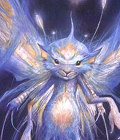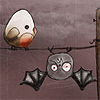Сорри за некропост

теам просто заинтересовала
Вожу по своему сеттингу, основная фишка которого, применительно к этой теме это борьба грубо говоря, добра со злом. Причём лагеря достаточно мощьные боги и иже с ними.
Соответственно есть два основных потока эмисии мега-маго-шмоток
1: Вещи даваемые злыми и добрыми боссами в награду и для выполнения конкретной миссии. Их последователей убивают соответственно шмот теряется, находится, воруется, выкапывается из могил

2: Вещи созданные мастерами для собственного пользования и удовлетворения тщеславия, типа я такий крутой я могу и это сделать.
Эти методы задействуются если надо снабдить партию чем-то крутым. Очевидно, что каждая вещь уникальна и имеет свою историю.
Введение в мир сравнительно ослабого шмота происходит из очень многих источников.
Например король экипирует свою личную гвардию доспехами +1 или мечами +1. У короля хватит на это денег, а также очевидно есть и желание особенно если он тиран и деспот

Купец хочет купить какое нибудь защитное кольцо, если едет через опасную территорию. Или не кольцо а жезл какой нибудь пугалки или убивалки

Если он богат у него хватит на это денег.
Также в мире есть некоторое количество молодых и горячих кровью народов и государств, которые постоянно создают узлы локальных (и не очень) конфликтов и иже с ними

Соответственно много боевых столкновений, много желающих в них выжить следовательно есть спрос на доспехи и оружие несколько лучше чем стандартные

Таким образом где нибудь в столице вполне можно найти лавку с магошмотом.
Хотя возможно такое моё отношение к маг вещам основано на том, что я не использую распространённые сеттинги

Люблю велосипеды иобретать

Также хочу поделится соображениями относительно магошмоток. Но это моё очень скромное ИМХО

1 Описание магошмота есть в ПХБ, т. е. игроки знают чего хотеть.
2 Выросла хитовка монстров => увеличилось время боёвок.
3 Игра стала болше похожа на MUORPG, а там не магический шмот вообще не котируется
Возможно всеми этими вещами создатели правил намекают нам, что надо больше плюшить игроков?


 May 14 2008, 22:30
May 14 2008, 22:30



 May 16 2008, 12:21
May 16 2008, 12:21





 May 16 2008, 14:29
May 16 2008, 14:29

































